#1980s
Rare Rides Icons: The History of Stutz, Stop and Go Fast (Part XX)
Rare Rides Icons has been embroiled in the Stutz story since February of this year. Through six months and 20 total installments, we’ve covered the entirety of the Stutz brand’s evolution. Stutz started with a win at the inaugural Indianapolis 500 and eventually morphed into a manufacturer of high-powered luxury cars. After the emphasis turned to safety and away from racing, Stutz lost its footing quickly and went extinct.
Decades later it was resurrected by a wealthy man with a background in banking. In 1970 the new Stutz Motor Car Company capitalized on a wave of gauche neoclassical styling that the well-heeled of Hollywood and the Middle East so lovingly embraced. From there the Stutz lineup grew larger, more ostentatious, and more ridiculous. For a time the company sold its wares almost exclusively to foreign regimes, the exported vehicles long lost to time.
We finish the series with the largest and most exclusive Stutz ever built. Massive in length, it was much larger than the Duplex, IV-Porte, Victoria, and indeed the Diplomatica. We close out the Stutz chapter of our lives with Royale and a very interesting recent announcement.
Rare Rides Icons, The Nissan Maxima Story (Part III)
After its first few years as an 810, 910, Datsun by Nissan, Maxima by Datsun, Datsun/Nissan, and similar, the Maxima settled into its permanent home under Nissan branding. The well-equipped compact sedan sold over 198,000 copies in the United States between 1982 and 1984 (‘82 is the earliest year sales data is available) before an all-new Maxima arrived in 1985. With its second generation, Nissan veered off to distinguish the Maxima from its most direct competition, Toyota’s Cressida. Picture it, October 1984.
Rare Rides Icons: The History of Stutz, Stop and Go Fast (Part XIX)
Today we find ourselves in the 19th chapter of Stutz historical coverage. In the early Eighties Stutz (somewhat) successfully branched out from its Blackhawk-only product line, and made the Bearcat targa, the Bearcat II convertible, some SUVs for dictatorial armament and parade usage, as well as sedans and limousines.
We’re in the latter group of automobiles at the moment. So far we’ve covered the one-off Duplex that found no customers, and its successor the IV-Porte that did. After the IV-Porte came the Victoria, which added 10 additional inches to IV-Porte’s base, the B-body Bonneville. Victoria survived the Bonneville’s full-size demise in 1981 and moved its basis to the similar Oldsmobile 88 in 1982. Around that time Stutz added an even more exclusive, larger, and more garish sedan to the lineup. Let’s talk about Diplomatica.
Rare Rides Icons: The History of Kia's Larger and Full-size Sedans (Part X)
As we return to the history of Kia’s large sedans, we find ourselves in the midst of the 2010s. When the full-size and rear-drive K900 was introduced for the 2015 model year, Kia’s front-drive comfort option, the K7 (Cadenza to you), was in the midst of its first generation. A replacement for the unloved and ugly Opirus (Amanti to North Americans), the K7 ushered in sophisticated but bland Euro-centric styling from Peter Schreyer upon its launch in 2010.
Cadenza didn’t make its way to the North American market until 2014, and debuted with slightly sharper styling and a nicer interior via a mid-cycle refresh. Kia took its time in bringing the Cadenza to the North American market, as they wanted to be sure they got it just right.
In the end, the first Cadenza fell between the soft rock of the Lexus ES and the hard place of the Nissan Maxima. Additionally, it lacked the prestige to compete with other large front-drive upmarket offerings of the time. The new cadenza lasted only three model years in North America, as Kia was ready for an all-new generation K7/Cadenza in 2017.
Abandoned History: Ford's Cruise-O-Matic and the C Family of Automatic Transmissions (Part VI)
Documentary Series The Last Independent Automaker in Production, Will Chronicle the Life and Times of American Motors Corporation
A new documentary is currently in production and promises to be of interest to many of our readership. It’s about everyone’s favorite underdog automaker, American Motors Corporation (1954-1988)! Pride of Kenosha, Wisconsin. The team behind the production of The Last Independent Automaker is assembling a deep dive into the brand’s history, which started in 1954 when car and refrigerator manufacturer Nash-Kelvinator Corporation acquired Hudson Motor Car Company, and formed AMC.
Rare Rides Icons: The History of Stutz, Stop and Go Fast (Part XVII)
We’re back again with more Stutz history, and our coverage of the bric-a-brac produced by the Stutz Neoclassical company as complementary offerings to two-doors like the Blackhawk, Bearcat, and Bearcat II. In our last entry, we covered the Duplex, a sedan that (unsuccessfully) wore Blackhawk styling. Based either on a Pontiac or a Cadillac, the Duplex was the ultimate production version of the Ministeriale prototype sedan built by Carrozzeria Padane.
With an astronomical ask of $32,500 ($251,312 adj.) circa 1970 and styling that hadn’t translated well into a sedan, the Duplex was a non-starter. Just one was ever made, and it was sold to a criminal in Utah. But that didn’t deter CEO James O’Donnell, who was insistent a Stutz sedan was viable. A few years later there was another Stutz sedan presented: IV-Porte.
Junkyard Find: 1983 Volvo 242
Volvo built the 200 Series for nearly 20 years and the owners of those sensibly rectangular machines tended to keep them for decade after decade, so I have no problem finding plenty of discarded examples during my junkyard travels despite the last ones rolling off the assembly line in 1993. Most of those machines have been the four– cylinder/ four– or five– door cars, though, because more cylinders and/or fewer doors didn’t seem stolid enough for your typical American Volvo shopper. In fact, prior to today, I had documented as many junked 262C Bertones as 242 two– doors (and just a single 264 sedan). Now I’ve found this rusty 242 in a self-service yard between Denver and Cheyenne.
Rare Rides Icons: The History of Kia's Larger and Full-size Sedans (Part IX)
It’s time once again for more Kia large sedan goodness. Like last time, we pick up in the early 2010s. Kia’s second full-size sedan developed under Hyundai’s controllership was the K7, or Cadenza in all markets outside South Korea. Pitched as a value-priced premium front-drive car, it competed against the likes of the Toyota Avalon and Nissan Maxima, but lacked any defined comfort or sporty characteristics. Cadenza also had a bland corporate design courtesy of the company’s new Euro-like styling mission, and former VW designer Peter Schreyer.
Shortly after the Cadenza went on sale, Kia turned its sights toward an even larger sedan: A new rear-drive one to occupy the luxury space, a class above the Cadenza. It was the largest car Kia offered in nearly two decades, the first rear-drive Kia since the (Mazda Sentia) Kia Enterprise of 2002, and the first rear-drive sedan Kia ever sold in the North American market. It’s time for K9.
Rare Rides Icons: The History of Stutz, Stop and Go Fast (Part XVI)
We return to our long-running Stutz historical coverage today, with a few of the odds and ends vehicles that were never the headliners of Stutz’s brand portfolio. During the Seventies and Eighties, the Blackhawk and targa roof Bearcat funded some other fun ideas that occupied the thoughts of company CEO James O’Donnell.
In our last entry, we covered what was perhaps the strangest offering of the latter Stutz entity, a C/K era Suburban that concealed a mounted machine gun in its interior. The armored SUV was subsequently turned into a gun-free dictatorial parade sedan with targa roof, and a trunk. The be-trunked Suburban also donated its shape to an upright regular sedan and six-door funeral transport.
And while the Stutz Suburban takes were intended for foreign heads of state for security and coup d’etat purposes, the Stutz sedans were directed at the company’s more traditional American customer: Someone who feared no peasant uprising but did enjoy flashy styling and lots of elegance. Introducing the Duplex.
Abandoned History: Ford's Cruise-O-Matic and the C Family of Automatic Transmissions (Part V)
We resume our Ford Cruise-O-Matic transmission coverage today, as the original two- and three-speed automatics of the Fifties transition into the new C family. C transmissions were designed to be lighter (aluminum) and more efficient than their cast iron predecessors. The wonder of alloys!
In our last entry, we covered the first two C transmissions, the C4 (1964-1981) and C6 (1966-1996). Since we’re proceeding chronologically, we step back to Cruise-O-Matic for a moment, and a mix-and-match transmission: FMX.
Junkyard Find: 1987 Ford Taurus LX
Rare Rides Icons: The History of Kia's Larger and Full-size Sedans (Part VIII)
We return to Kia’s large sedan history today, at a point shortly after the launch of the K7. Kia’s full-size front-drive for the 2010s, the K7 was called Cadenza in all export markets, and was a successor to the unfortunately styled Opirus (Amanti in North America). Kia hired Peter Schreyer from his longtime employment at Volkswagen Group in order to usher in a new stylistic era at Kia.
Though it went on sale for the 2010 model year, Kia wasn’t quite ready to send the Cadenza to the North American market. With the market’s general rejection of the Amanti in mind, Kia called on Schreyer to refresh the Cadenza and lux it up before its North American launch.
Rare Rides Icons: The History of Stutz, Stop and Go Fast (Part XV)
Last time in our tale of Stutz the company finally realized its dream of a true convertible, the Bearcat II. The original product dream of CEO James O’Donnell, the Bearcat II went on sale in 1987. Though the company’s fate was pretty much sealed by that time, Stutz had its heyday of models circa the early Eighties. Spoilers: Machine guns were involved.
Rare Rides Icons: The History of Kia's Larger and Full-size Sedans (Part VII)
We return to Kia’s midsize-or-larger sedan history today in the latter portion of the 2000s. In our last entry, we learned about the Optima, which arrived as Kia’s first midsize developed under Hyundai’s majority ownership. Sensibly the Optima was a light rework of Hyundai’s Sonata, and the two shared almost everything (including very poor crash safety ratings).
On the more executive full-size side of the lineup, Kia’s Opirus was the first large car developed under Hyundai ownership. It shared a platform with the Grandeur (XG350 to you). While the Opirus saw okay sales in most markets, it failed in North America where it was sold as the Amanti. Very few North Americans wanted a $39,600 (adjusted) Kia, no matter how many luxury styling touches it borrowed from other brands. And so the Amanti was canceled after 2009 locally (2012 elsewhere). By that time its replacement was already on sale. Meet K7.






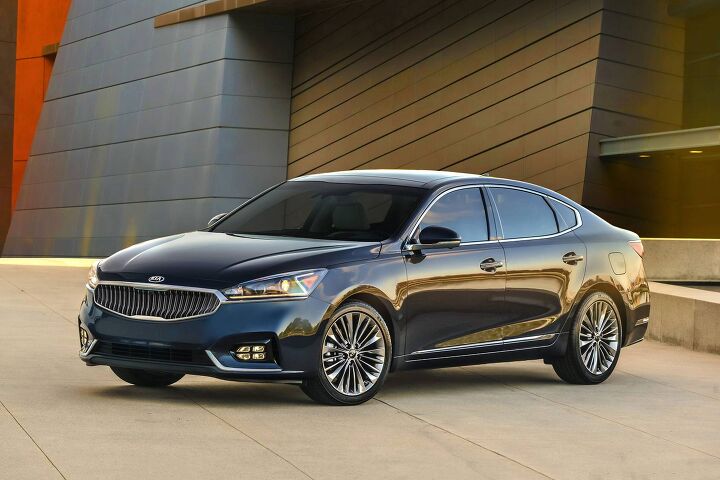


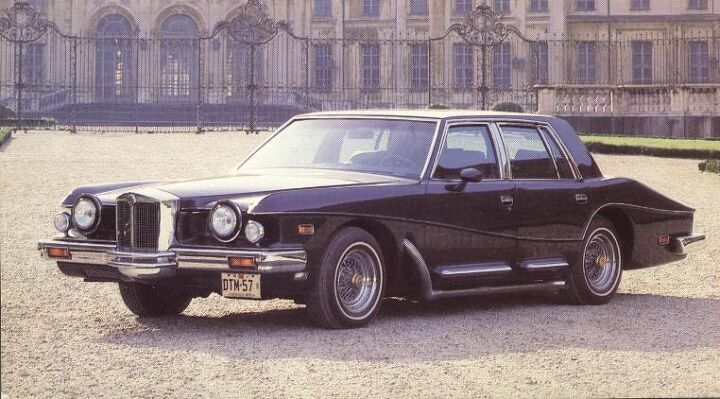
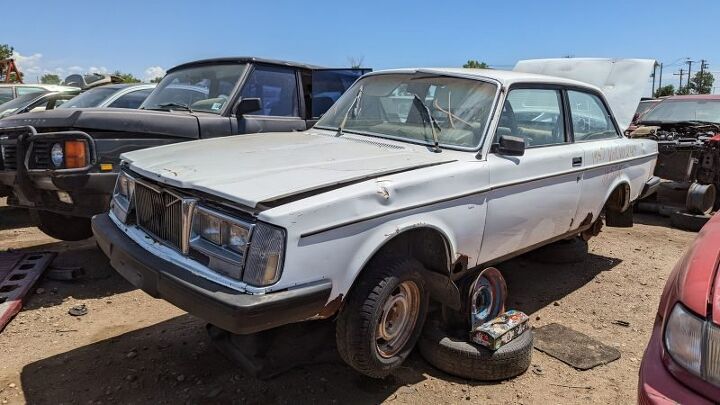

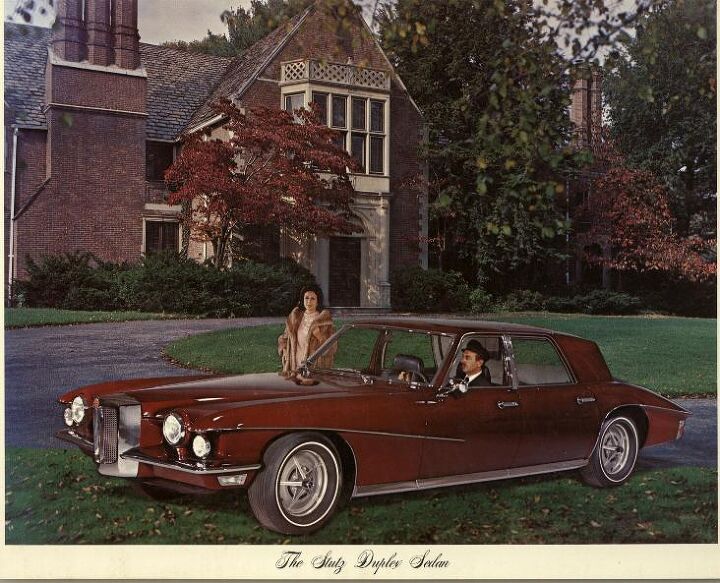
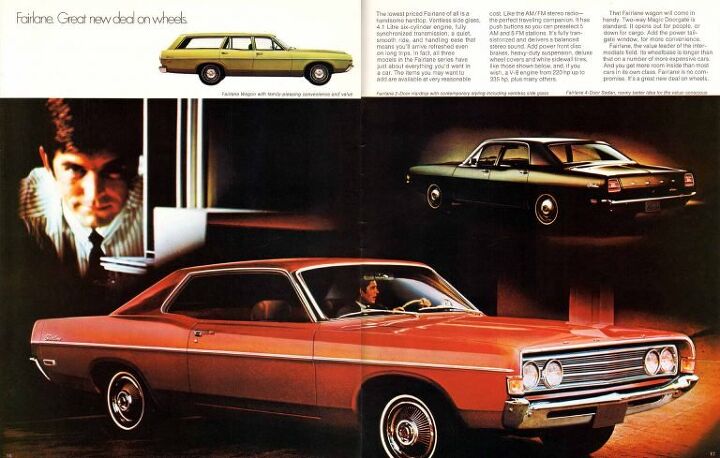

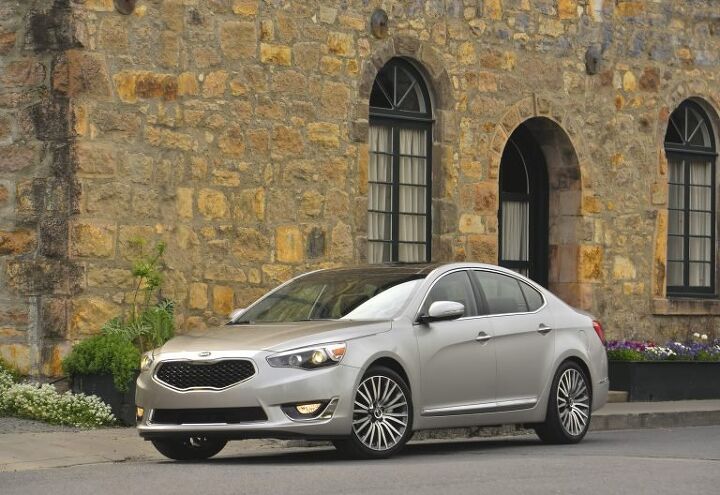














Recent Comments